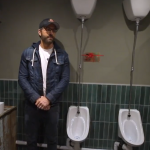Baking a salted owl and grinding it into powder to treat gout is one of the bizarre suggestions found among thousands of medieval medical remedies.
Stuffing a puppy with snail and sage, roasting it over a fire and using the fat to make a salve, is another suggested gout cure.
Someone suffering from cataracts hundreds of years ago would be advised to mix the gall bladder of a hare with some honey and use a feather to apply it to their eye.
The treatments are among 8,000 medical recipes contained in 180 medieval manuscripts – mostly dating to the 14th or 15th centuries – that are being digitised by the Cambridge University Library.
However, some date back even earlier, with one being 1,000 years old.
They also give an insight into the violence of medieval life, with advice on how to discover if a skull has been fractured after a weapon injury, as well as how to set broken bones and stop bleeding.
Some contain detailed illustrations and show doctors used a “bewildering array of ingredients” – animal, vegetable and mineral, said project leader Dr James Freeman.
Suspected meteor caught on camera streaking across the sky over Utah
‘Meteor’ seen in US as boom heard
Tourists duck as plane makes extremely low landing on Greek island of Skiathos
“For all their complexities, medieval medical recipes are very relatable to modern readers,” he said.
“Many address ailments that we still struggle with today: headaches, toothache, diarrhoea, coughs, aching limbs.
“They show medieval people trying to manage their health with the knowledge that was available to them at the time – just as we do.”
Dr Freeman added: “They are also a reminder of the pain and precarity of medieval life, before antibiotics, before antiseptics and before pain relief as we would know them all today.
“Other treatments include salting an owl and baking it until it can be ground into a powder, mixing it with boar’s grease to make a salve, and rubbing it onto the sufferer’s body to cure gout.”
The texts come from a dozen Cambridge colleges, the Fitzwilliam Museum and the University Library, and are being preserved as part of the £500,000 Curious Cures project.
Full transcriptions of the remedies and high-res images will be made freely available in the Cambridge Digital Library as cataloguers work through the texts over the next two years.






















